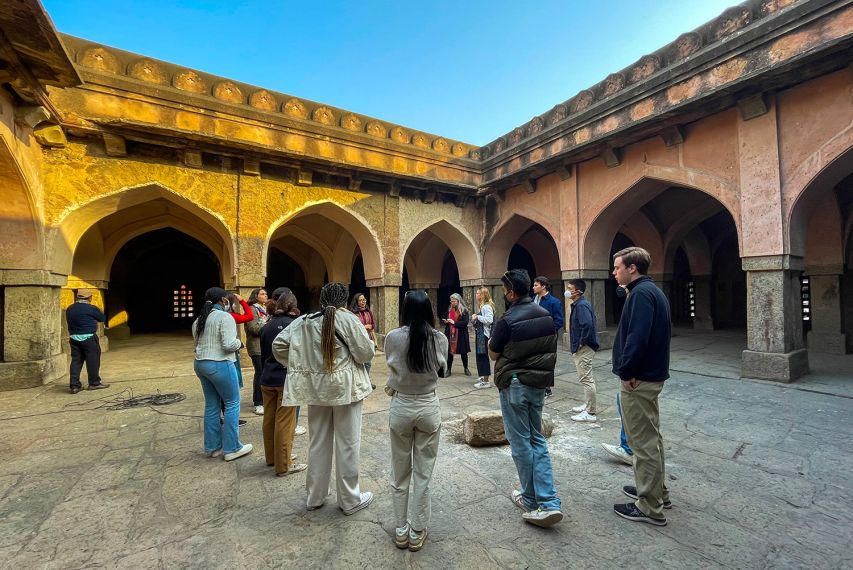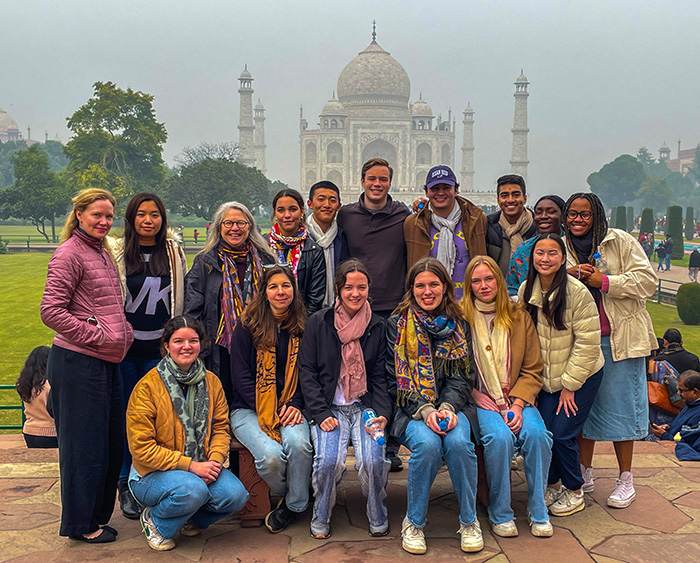Urban Transformations - Exploring Sustainability Past + Present. India
Phoebe Crisman, Professor of Architecture + Director of Global Studies / Ingrid Hakala, Director of Global Internships
This interdisciplinary program gave 14 students an opportunity to study Indian cities, architecture, landscape, and culture through a sustainability lens—examining how environmental, aesthetic, and socio-economic forces have shaped the built environments of Delhi, Agra, Fatehpur Sikri, and the sacred city of Mathura.
The students learned about sustainability challenges that all global cities face—climate change, the need for shelter, water, food, energy, transport, and waste management, along with ecological and heritage conservation, environmental justice, and how to imagine and design for a more sustainable future.
“In addition, we also engaged deeply with our new UVA partner, O.P. Jindal Global University, for a full-day workshop focused on urban equity and community engagement,” said Crisman.
“We visited places with local architects, urban planners, UVA alumni, and JGU faculty to learn past and current sustainable strategies for urban density, public space, building types, rainwater collection/storage, solar orientation, shade, plantings and microclimates, and natural materials.”








